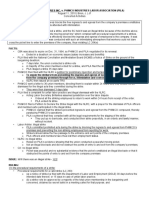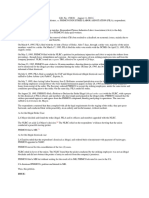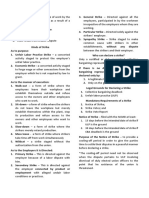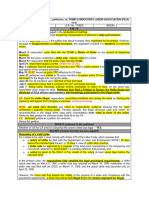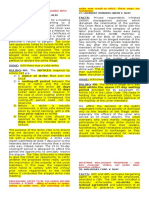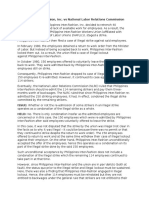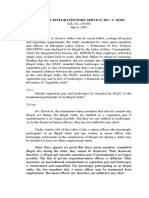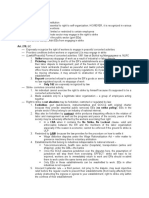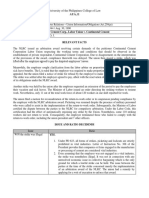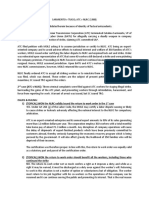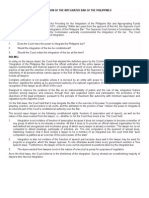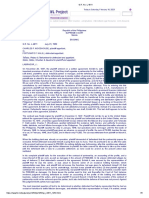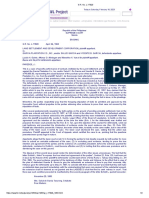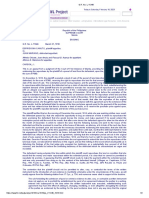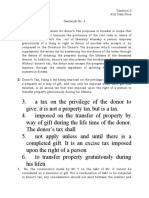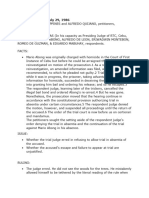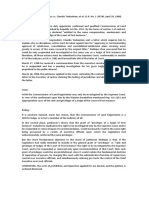0% found this document useful (0 votes)
80 views3 pagesNational Federation of Labor (NFL) Et Al (P) vs. National Labor Relations Commission (R) Facts
1) The union staged strikes on January 25-26 and February 11 without following required procedural steps like filing a notice of strike and observing cooling-off periods.
2) 141 union members were dismissed for refusing to return to work after the Secretary of Labor ordered them to do so on March 11, ending the illegal strike.
3) A strike must follow certain steps like filing a notice, taking a secret strike vote, reporting the results at least 7 days before the intended strike, and observing cooling-off periods to be legal and protected. Failing to do so makes the strike illegal.
Uploaded by
DONNIE RAY SOLONCopyright
© © All Rights Reserved
We take content rights seriously. If you suspect this is your content, claim it here.
Available Formats
Download as PDF, TXT or read online on Scribd
0% found this document useful (0 votes)
80 views3 pagesNational Federation of Labor (NFL) Et Al (P) vs. National Labor Relations Commission (R) Facts
1) The union staged strikes on January 25-26 and February 11 without following required procedural steps like filing a notice of strike and observing cooling-off periods.
2) 141 union members were dismissed for refusing to return to work after the Secretary of Labor ordered them to do so on March 11, ending the illegal strike.
3) A strike must follow certain steps like filing a notice, taking a secret strike vote, reporting the results at least 7 days before the intended strike, and observing cooling-off periods to be legal and protected. Failing to do so makes the strike illegal.
Uploaded by
DONNIE RAY SOLONCopyright
© © All Rights Reserved
We take content rights seriously. If you suspect this is your content, claim it here.
Available Formats
Download as PDF, TXT or read online on Scribd
/ 3


